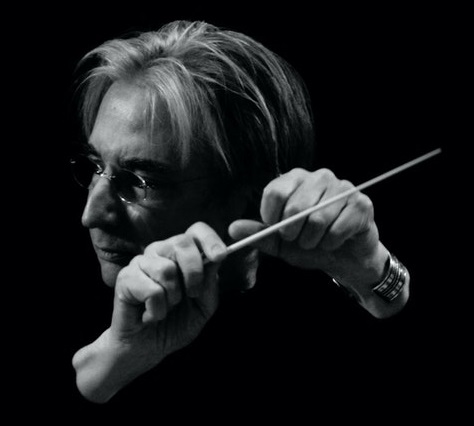
A WELCOME, HEARTFELT RETURN
With a resplendent silvery half-moon radiating over the City, you knew this would be a very special concert.
Apprehension had been palpable as the recently retired music director Michael Tilson Thomas, turning 77 next month, underwent brain surgery to remove a tumor. Forced to cancel guest engagements with four orchestras, he made it back despite all adversity—a mite shaky, a mite cautious, but as confident and verbose as ever conducting the San Francisco Symphony.
The instant he came on stage a rousing shout and a standing ovation by the audience brought things to a standstill, coming from a crowd fervently wishing for his total recuperation. Clearly he is and was esteemed and beloved.
His program was a careful one, devoid of unfamiliar music or technical knots. The highlight was the 15-minute “Notturno” (Nocturne) from 2004 composed by the conductor himself—-a flight of fancy for solo flute (Demarre McGill) and string orchestra. The stamp of Italy was on the score, which even quoted discreetly from the Sextet of Donizetti’s opera “Lucia di Lammermoor” in the strings’ pizzicato. On hearing it, you might mistake this for a 19th-century work——modernisms were studiously avoided in order to plumb a specific milieu.
Demarre is a stellar new name on the scene, though not McGill; his brother, the renowned clarinetist Anthony, has played the area repeatedly. Demarre, currently with the Seattle Symphony, would make a terrific match as principal with the SFS, which now has a yawning vacancy—-particularly if he ever could stay still. Performing MTT’s piece, he was restless and wide-ranging, adding a visual element to the auditory. Demarre could fill a double void in the SFS, which like many professional orchestras around the country has no Black personnel playing on stage regularly.
He played the fast-flying and bird-call effects to the hilt, as trilling as they were thrilling. He produced a sensual flow in the many lyrical sections and brought off quasi-improvisatory sections delectably. The SFS’s string orchestra fell in behind him, as if long-time collaborators.
In his flawless impromptu introduction to the piece, MTT spoke of the work as an existential quest, with the flutist pondering, what am I doing here? McGill I thought answered that query several times over with his committed playing.
The Nov. 16 concert had as bookends Mozart’s “Six German Dances,” which Mozart had dashed off in record time over a single brief sitting, and the first (“Spring”) of the Schumann Symphonies, which to these ears has always resonated as a quasi-Prussian opus of unwavering severity—perhaps springtime at a boot camp.
MUSIC NOTES—MTT’s successor Esa-Pekka Salonen has his work cut out for him, not only conducting regularly, but also working to help fill at least 11 vacancies on the SFS roster, including the #1 and #2 members of both the flute section. In addition, there are slots open in the cello section (including the principal), two more in the clarinets, and assorted openings in violin, viola, bassoon, trombone and percussion…MTT is returning to the podium in measured steps. For Nov. 18-20, he is conducting only Copland’s “Appalachian Spring,” which he has led many times. The rest of the program will feature Ludovic Morot on the podium.
SAN FRANCISCO SYMPHONY under MTT’s baton, at Davies Hall S.F. Nov. 12-13. For info: (415) 864-6000, or go online: www.sfsymphony.org.